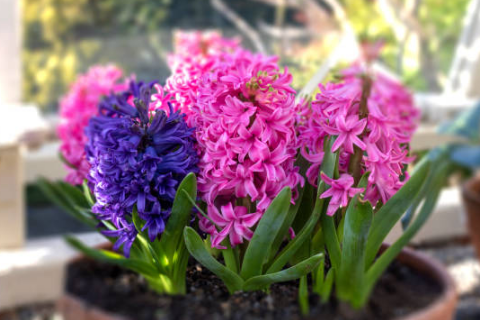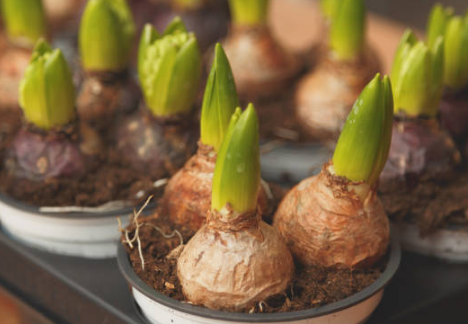Hyacinths are perennial bulbs that bloom every spring in USDA Hardiness Zones 4 through 8, filling the air with sweet fragrance just when we need it most—after a long, cold winter. But just as other flowers are beginning to stir, hyacinths are already starting to fade. So what should you do with them once the flowers are spent? The answer depends on whether they’re planted in the ground or grown in containers. This guide walks you through how to care for hyacinths after they bloom, so you can enjoy their beautiful flowers again next spring.
How to Handle Outdoor Hyacinth Bulbs
If you want your garden-planted hyacinths to bloom again next year, treat them like other hardy, fall-planted, spring-blooming bulbs such as daffodils or perennial tulips. Post-bloom care is relatively simple, but there are a few important steps to follow.
Remove the Spent Flower Spikes
Once your hyacinths have finished blooming, snip off the flower stalks. While this isn’t absolutely necessary, removing the flower spikes prevents the plant from putting energy into seed production. Instead, the energy produced through photosynthesis will be stored in the bulb for next year’s blooms. And if you brought the blooms indoors to enjoy in a vase, your job is already done.

Wait for the Leaves to Die Back Naturally
To bloom again next spring, hyacinths need time to recharge their energy reserves. Flowering takes a lot out of them, and they rely on their leaves to store energy in the bulbs. Let the foliage grow and turn yellow naturally before trimming it back to the ground. If you’re naturalizing your hyacinths, you’ll still need to remove the leaves once they’ve withered. Just make sure not to plant annuals or late-emerging perennials too close, as they may shade the hyacinth foliage before it finishes its growth cycle.
Let the Bulbs Chill
This part is easy. Most spring-blooming bulbs, including hyacinths, require at least 10 weeks of temperatures below 45°F (7°C) to trigger the biochemical changes necessary for flowering. In most zones, bulbs planted in garden beds will naturally get this cold period outdoors. However, in USDA Zones 9 and warmer—where frost is rare—you’ll need to dig up the bulbs and follow indoor chilling steps similar to those for potted bulbs.
How to Handle Potted Hyacinth Bulbs
Unlike bulbs planted in the ground, potted hyacinths need extra care if you want to keep them blooming for several years. Here’s what to do:
Let the Leaves Die Back
Potted hyacinths also need their foliage to recharge energy. Move the pots to a quiet, sunny spot—even though they’ll just look like a bunch of green leaves without flowers. Water when the top inch of soil feels dry.
Store the Bulbs
Once the leaves have yellowed and withered, you have two choices: either leave the bulbs in the pot or dig them out and store them. Leaving them in the pot is usually easier if conditions are right—use a container with good drainage, keep the soil slightly moist (not dry), and store the entire pot in a cool, dark place like an unheated garage or basement.
If you prefer to store the bulbs separately, wait until the leaves have died back and gently remove the bulbs from the soil. Discard any that are soft or damaged. Trim off any remaining stems and place the healthy bulbs in a cool, dry location for the summer. Use breathable paper or mesh bags for storage—never plastic, which can trap moisture and cause rot.

Chill the Bulbs Indoors
Whether you’re storing them in the pot or separately, potted hyacinths need a cold period just like garden-grown ones. If the bulbs are still in their pots, move the containers to a spot where the temperature stays below 45°F (7.5°C) but above freezing—such as a cold corner of a basement or an unheated garage. Check periodically to make sure the soil stays slightly moist and doesn’t freeze.
If you’ve removed the bulbs, place them in paper or mesh bags and store them in the refrigerator or in a similarly cool, non-freezing space. Even though they won’t start rooting until they’re planted again, they’ll still benefit from the required cold period.
Bring Hyacinths Back Outdoors
In early spring, move your overwintered pots of hyacinths back outdoors to a sunny spot and water thoroughly. As temperatures rise, the bulbs will begin to wake up. Once they emerge, water them whenever the soil feels dry to the touch.
If you stored the bulbs separately, you can pot them up in late winter. Place them in a cool indoor space and water them once when planting. Resume regular watering after leaves appear, and move the pots outside into full sun to continue growing.

